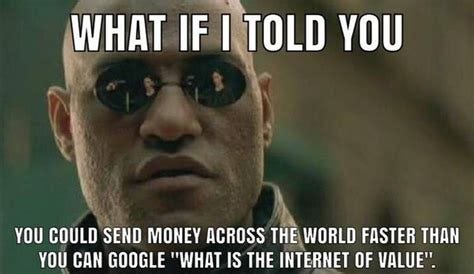For this week’s post, I thought it would be good to take a look back at the fascinating origins of Bitcoin, which are especially relevant if you are new to Bitcoin. Then I wanted to take a look at recent developments in the Bitcoin network. In particular, I wanted to do a deeper dive into the Bitcoin Lightning Network, which has potential to revolutionize global payments (and would help accelerate Bitcoin adoption). Also, in case you missed it, I wrote last week about buying Bitcoin peer to peer (versus using centralized exchanges):
Origins
Bitcoin is a decentralized digital currency, without a central bank or single administrator, that can be sent from user to user on the peer-to-peer bitcoin network without the need for intermediaries. Transactions are verified by network nodes through cryptography and recorded in a public distributed ledger called a blockchain.
Bitcoin was created in 2008 by an unknown person or group of people going by the name Satoshi Nakamoto and released as an open-source software in 2009. The identity of Satoshi Nakamoto remains unknown, but they are estimated to own around 1 million Bitcoins, worth billions of dollars as of January 2023.
The first real-world transaction using Bitcoin occurred in 2010, when a programmer named Laszlo Hanyecz used 10,000 Bitcoins to purchase two Papa John's pizzas. At the time, the value of those 10,000 Bitcoins was around $40, but as of January 2023, it would be worth around $230 million.
In 2011, the value of a single Bitcoin began to rise, and by the end of the year, it had reached $1. In 2013, the value of a single Bitcoin reached $260, before collapsing to around $50 by the end of the year.
Bitcoin has been through several bull and bear markets since then, with its value reaching an all-time high of $64,863.10 in April 2021. Despite its early success, Bitcoin has also faced significant controversy and criticism, with some arguing that it is a speculative bubble or a tool for illegal activities. Nevertheless, it has remained popular and continues to be used for a variety of legitimate purposes, such as online shopping and international money transfers.
Recent Developments
There have been several important recent developments on the Bitcoin network, including:
Increasing institutional adoption: In recent years, there has been a significant increase in institutional adoption of Bitcoin, with major companies such as Tesla, Square, and MicroStrategy investing billions of dollars in the cryptocurrency. This has led to increased mainstream acceptance and has also helped to drive up the price of Bitcoin.
Lightning Network: The Lightning Network is a second-layer scaling solution for Bitcoin that aims to increase the speed and lower the cost of transactions on the network. It has been gaining traction in recent years, with the number of active nodes and channels on the network growing rapidly. More about this later in the post.
Taproot and Schnorr Signatures: Taproot and Schnorr Signatures are proposed upgrades to the Bitcoin protocol that aim to improve the privacy and scalability of the network. They would allow for more efficient transactions and could also enable new types of smart contracts.
Mining centralization: In recent years, the mining of Bitcoin has become increasingly centralized, with a small number of large mining pools controlling a significant portion of the network's hashrate. This has raised concerns about the potential for a 51% attack and has led to calls for a more decentralized mining ecosystem. On the flip side, the economic incentive (cost / benefit) to mine is far greater than the cost to attack the network.
Bitcoin ETFs : The development of Bitcoin ETFs which are a type of investment fund that aims to track the price of Bitcoin. These financial instruments have been approved for trading on several stock exchanges and have made it easier for investors to gain exposure to Bitcoin without having to hold the actual asset.
Bitcoin Halving: Bitcoin Halving is a process that happens every 210,000 blocks, or roughly every four years, where the rewards earned by miners for validating transactions on the network are cut in half. The most recent halving occurred in May 2020, and it is expected to have a significant impact on the supply and demand of Bitcoin in the long term. The next halving is expected sometime in early 2024.
Privacy enhancements: In recent years, several privacy-enhancing proposals have been developed for the Bitcoin protocol, such as Coinjoin, Dandelion, and Mimblewimble. They aim to make it more difficult for third parties to track and link transactions on the network and increase the privacy of users.
Lightning Network
The Lightning Network is built on top of the Bitcoin blockchain and uses a technique called "off-chain" transactions. This means that transactions on the Lightning Network are not recorded on the blockchain, but instead are conducted between users directly. This allows for faster and cheaper transactions, as well as increased privacy.
When two users open a payment channel on the Lightning Network, they must first lock up a certain amount of Bitcoin in a multi-signature wallet. This creates a balance sheet between the two users, which can be updated as many times as they want with new transactions. These transactions are not recorded on the blockchain, but are instead broadcasted between the users directly. When the channel is closed, the final balance is recorded on the blockchain, and the funds are returned to the users' wallets.
The Lightning Network also supports "routing" transactions, which means that a user can send funds to another user who is not directly connected to them. This is done by routing the transaction through a series of payment channels until it reaches the destination. This allows for a more decentralized network and enables more people to participate.
One of the main benefits of the Lightning Network is its fast transaction speeds. Because transactions are conducted off-chain, they are confirmed almost immediately and do not have to wait for confirmations on the blockchain. Additionally, the fees on the Lightning Network are much lower than on the main Bitcoin blockchain, making it more suitable for small transactions.
The Lightning Network also offers increased privacy and anonymity, as the transactions on the network are not recorded on the blockchain, it is more difficult to track the movement of funds.
However, the Lightning Network is still in the early stages of development and has some limitations. It is not yet widely adopted and can be complex to set up, and it also still require some trust on the other party involved in the channel to close the channel correctly. Additionally, the network is still relatively small and not all users are connected to each other, which makes it more difficult to find a route for a transaction.
Recent Lightning Network Developments
The Lightning Network is still a relatively new technology and there is ongoing development and research being done to improve it. One such development is the introduction of "atomic multi-path payments" (AMP), which allows a user to split a payment into multiple smaller payments and send them through different channels simultaneously. This can increase the chances of a successful transaction and also allows for more efficient use of the network's capacity.
Another development is the "lightning loops" which allows users to move funds in and out of the lightning network without closing their channel. This allows users to keep their channels open for longer periods of time, reducing the need for opening and closing channels frequently, and thus reducing transaction fees.
Additionally, there are also several projects working on making the Lightning Network more user-friendly by developing more user-friendly wallets, and also making it easier for merchants to integrate the network into their businesses.
While the Lightning Network is a promising solution for scaling the Bitcoin network, it is important to note that it is not without its limitations. One limitation is that it is still relatively new and not yet widely adopted, which means that it can be difficult to find a payment channel to route a transaction through. Additionally, the network is still relatively small and not all users are connected to each other, which makes it more difficult to find a route for a transaction.
Another limitation is that it still require some trust on the other party involved in the channel to close the channel correctly. This means that there is a risk that the other party could cheat and take more than their share of the funds. This can be mitigated by using a smart contract, that automatically closes the channel after a certain period of time, and also using a "watchtower" service that monitor the network and watch for any cheating.
Overall, the Lightning Network is a promising technology that has the potential to greatly improve the scalability, speed and cost-effectiveness of the Bitcoin network, but it is still in the early stages of development and there may be further developments and improvements in the future.
Lightning Network Payment Solutions
There are several popular Lightning Network payment solutions available at the moment. Some of the most popular include:
Zeus LN: A lightning network wallet for iOS and Android devices. It allows users to make and receive lightning payments and also supports routing transactions.
Blue Wallet: A mobile wallet for iOS and Android devices that supports both on-chain and off-chain transactions. It also has a built-in exchange feature that allows users to exchange between different cryptocurrencies.
Lightning Joule: A browser extension for Chrome and Firefox that allows users to make lightning payments directly from their browser.
Casa Node: A physical device that can be plugged into your home router and runs a full Lightning Network node. It allows users to open and close payment channels, and also supports routing transactions.
Spark: A mobile wallet for iOS and Android devices that allows users to open and close payment channels, and also supports routing transactions.
Phoenix: A mobile wallet for iOS and Android devices that allows users to open and close payment channels, and also supports routing transactions.
Breez: A mobile wallet for iOS and Android devices that allows users to open and close payment channels, and also supports routing transactions.
You can also use Muun Wallet and Strike to send Lightning Network transactions (these are the ones I personally use). Not financial or legal advice, for entertainment only, do your own homework. I hope you find this post useful as you chart your personal financial course and Build a Bitcoin Fortress in 2023. To see all my books on investing and leadership, click here.
Always remember: freedom, health and positivity!
Please also check out my Building a Financial Fortress Podcast on YouTube here and on all your favorite streaming platforms. I do a weekly Bitcoin news update every week on current items of interest to the Bitcoin community, usually 30 to 60 minutes depending on the number of topics to cover. Please check it out if you haven’t already.







